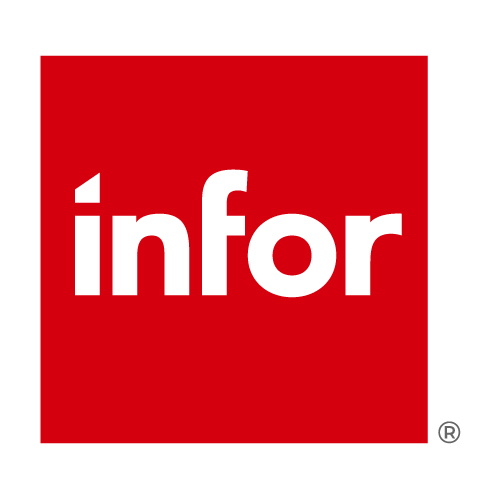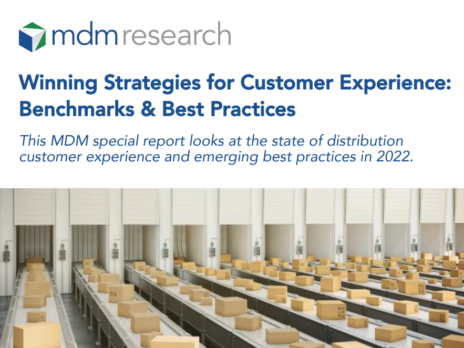
External market forces, from supply chain disruptions and freight delays to rising costs and staffing shortages are presenting new and increasingly complex challenges for distributors striving to attract and retain customer loyalty, through their experience, in a competitive landscape.

“There’s never been a tougher fight for customer loyalty,” says Tom Gale, CEO at Modern Distribution Management (MDM).
Distributors are recognising the significance of future-proofing their business models to meet changing customer needs for their loyalty in return. With customer expectations becoming increasingly sophisticated, embracing digital tools will equip distributors to better cater to customer demands while positioning themselves for more resilient, long-term success.
The challenge, however, lies in integrating technical expertise with digital platforms to provide a comprehensive customer experience along the whole customer journey without losing personability. Distributors should leverage technology with a human touch if they are to keep up with shifting customer demands and empower employees to respond effectively while retaining trusting interactions with customers that translate to long-term loyalty.
Strategy for changing customer experience
Historically, customer expectations were addressed with simple customer service strategy: reasonable pricing, quality services, and quick interactions such as order taking and support for issues. But new technologies have shifted these expectations and services towards a new paradigm: customer experience.
“Customer service is the standard package; you’re providing the standard products, the knowledge and the delivery, but customer experience starts to be the individualised piece that you bring forward to your customer. You have the specialised knowledge that a particular customer is seeking,” says Katie Poehling-Seymour, CEO and president of single-source distributor, First Supply.
“I began with a strategic plan being customer intimacy, not customer service. You have to get to know your customers to achieve that. When we made it the foundation of our strategic plan, it touched all elements of our company,” she continues.
Customers now seek out personalised interactions, proactive service and connected experiences across multiple digital channels. Distributors should remain agile and responsive if they are to adapt to these shifts. Data optimisation and visibility through ERP systems is becoming a crucial tool for companies to execute an effective strategy for customer experience by giving them a clearer understanding of the whole customer journey.
A successful customer experience strategy requires distributors to understand the customer’s journey and the business through their eyes. With more opportunities to have a touchpoint with the customer than simply at the time of sale, from the research available on a website and how products are delivered to customers, to the payment process, distributors should consider how to leverage technology to improve that experience along the full journey.
Key challenges for distributors
In the face of a challenging landscape of staffing shortages and supply chain issues and disruptions, distributors can leverage technology such as self-service tools, rich website content and AI-driven product recommendations to streamline processes and enhance customer experiences.
“The big challenge has been staffing. When experiencing a loss of employees, bringing in someone new takes a while to train them,” says Christian Ostiguy, vice-president at Drillmex, the wholesale distribution of industrial machinery and equipment. “We’re trying to replace this approach with a more digital footprint, such as the e-commerce site, taking external sales and making them hybrid where staff can do more without visiting customers,” he continues.
When a key person leaves a business, they leave with their knowledge. Distributors can leverage tools and resources such as a website or other pieces of technology to keep their customer experience strategy intact through a combination of resources without any key information missing.
Social media offers another channel for customer engagement and building brand awareness, offering a direct line to your brand. But for the same reason, it also poses a threat. With mistakes and complaints able to spread across the internet, there is higher accountability for businesses to be responsive and reactive to customer needs and requirements.
Leveraging technology for customer experience strategies
Through these additional uses of technology and resources, however, it is easier to provide detailed product information, technical specifications and images that can help customers conduct research and make informed decisions. AI-driven product recommendations use a variety of data sources to identify patterns and trends to provide personalised recommendations to each user. This information is then used to generate recommendations for similar products or services for the user, enabling cross-sell opportunities while saving time for the customer, and strengthening their relationship with the brand.
Distributors are also investing in user-friendly e-commerce platforms that allow customers to find information, place orders, and access account details independently, enhancing convenience. Distributors must strike a balance between digital self-service and maintaining personalised interactions. One can have easy omnichannel access to customers with the help of digital tools, but they require curated responses and easy usability.
“Covid sped up the digitalisation process, but it had already started,” says Ostiguy “Remote work prompted businesses to change and sped up the need for digital tools for interaction.”
“We’ve found chat is so important because so many people want to communicate that way,” adds Poehling-Seymour. “They’re used to that way in their personal life, buying things and asking questions via chat, and it’s just one more channel to again meet them where they want to be and operate the way that they want to receive communication.”
Adapting to new customer expectations
Rather than emulating Amazon or other retail giants, distributors are focusing on providing unique value to their customers. Enhancing their online presence with personalised content, AI-driven recommendations, and self-service capabilities can help meet customer expectations and strengthen their competitive position.
“In a customer’s research or customer’s search for a product, becoming their homepage might mitigate some risk of them searching elsewhere,” says Poehling-Seymour. “The moment your digital tool is not robust or relevant enough, customers have to go elsewhere. Investing early in something that’s extremely relevant and constantly asking customers for feedback to make upgrades will keep customers sticky, making it easy to do business and taking all of the friction out of it as much as possible.”
As distributors aim to meet shifting customer demands, they must focus on adapting to external market forces, embracing technology, and leveraging their unique value propositions. By striking a balance between the human touch of personalised service, quality assurance and digital innovation, distributors can solidify their position in the market as they successfully meet evolving customer expectations. However, they must remain reactive and informative to attract and retain customer loyalty if they are to do so effectively.








